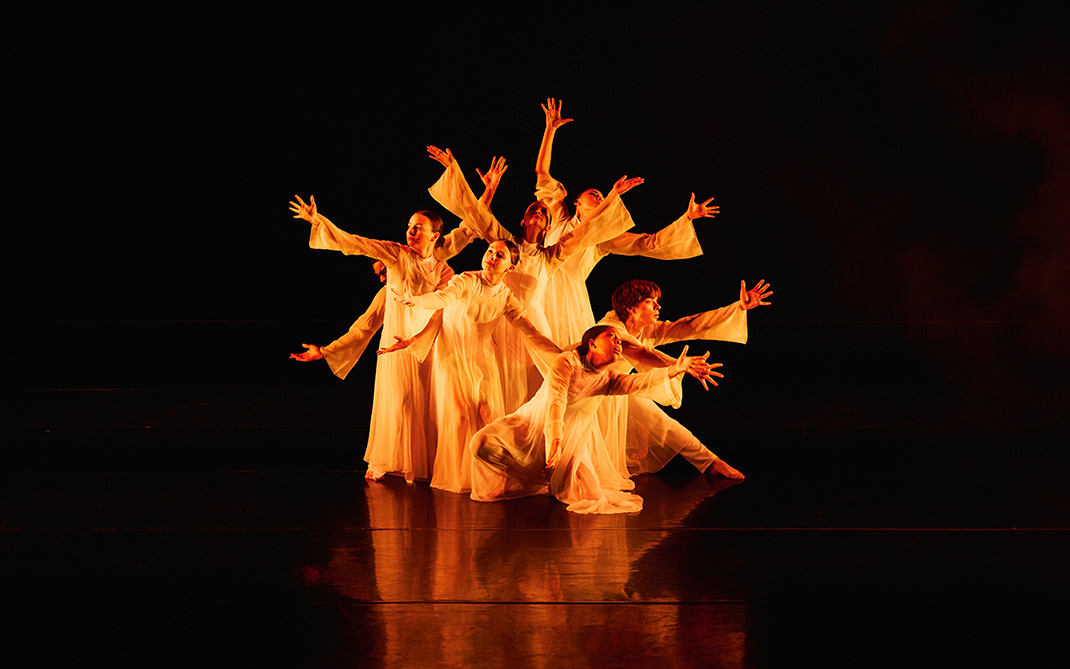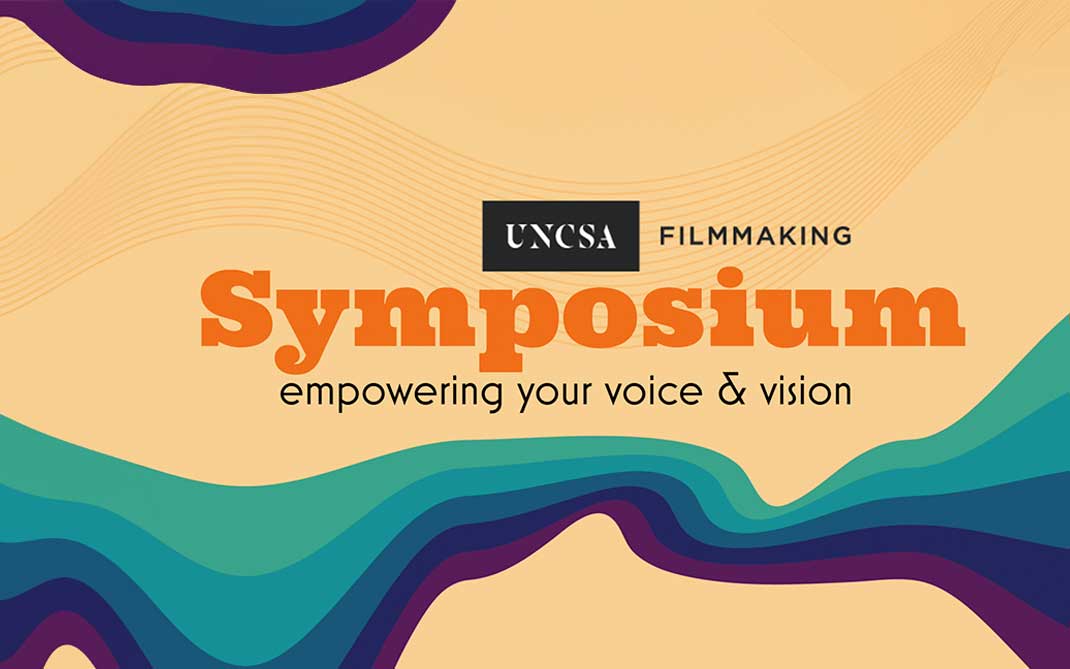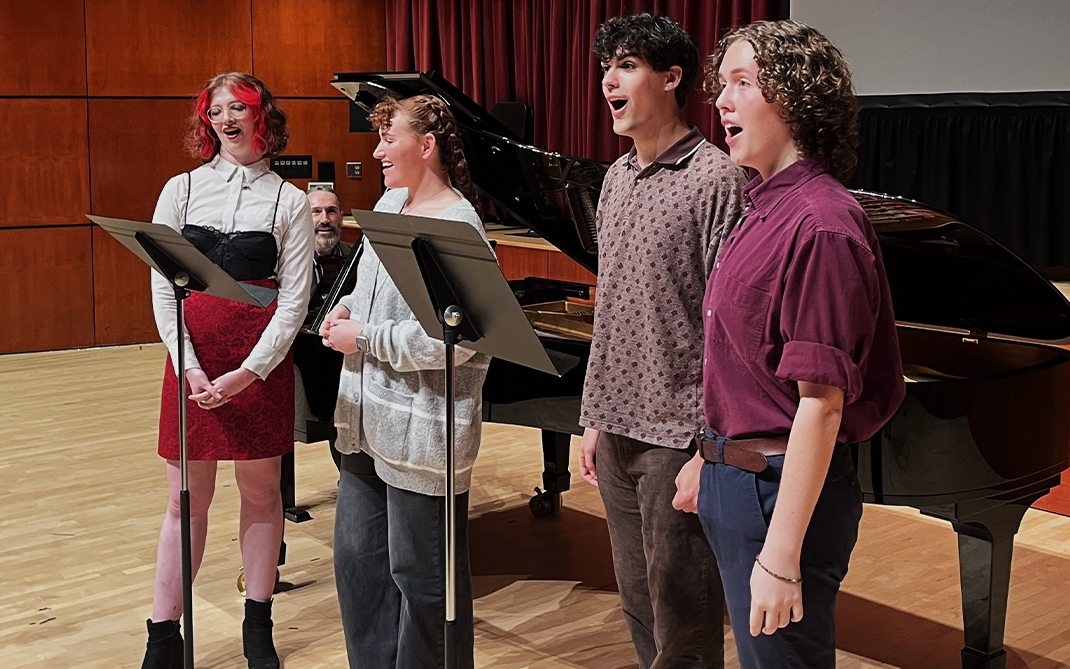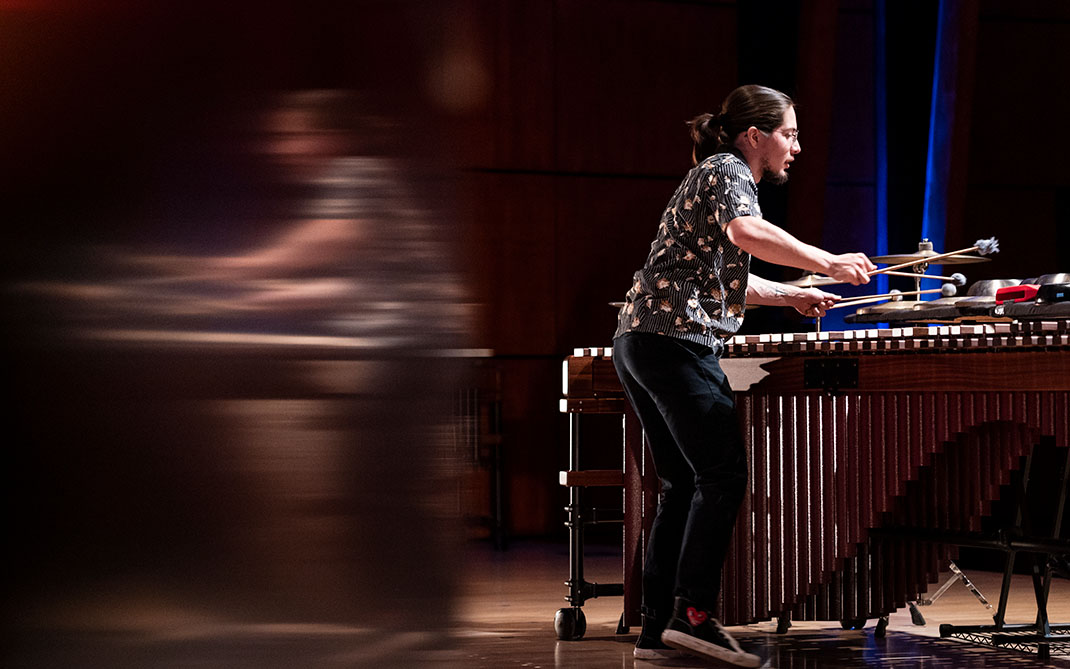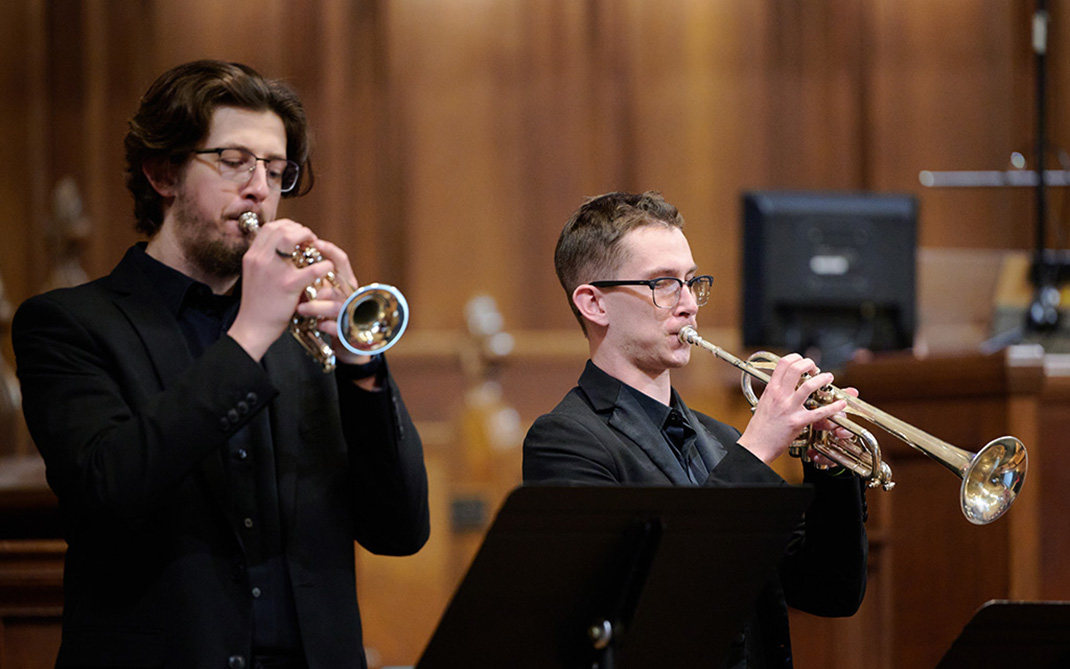Artist As Leader: Larissa FastHorse
*This Artist as Leader interview features Corey Madden, the former Executive Director
of the Thomas S. Kenan Institute for the Arts.
Larissa FastHorse is an award-winning playwright, director and choreographer. Her plays have been produced across the country from Juneau, Alaska to New York City, where her latest, “The Thanksgiving Play,” was presented by Playwrights Horizons this past spring after its premiere in Portland, Oregon at Artists Rep.
“The Thanksgiving Play” also represents a significant milestone. With eight more productions slated over the next year, it just became the first play by a Native American or Indigenous playwright to appear on “American Theatre” magazine’s list of the 10 most produced plays of the season. Larissa is currently Vice Chair of the Board of Theatre Communications Group, a national advocacy and service organization for non-profit professional theatres.
A member of the Sicangu Lakota Nation, Larissa has worked on artistic projects with Native communities all over the country. In 2015, she and artist-activist Ty DeFoe founded their own business, Indigenous Direction, a consulting company that advises organizations who want to engage with Indigenous art, audiences and artists in equitable ways.
In her conversation with Rob Kramer, Larissa reveals how she’s honed her collaborative leadership skills to serve the community-focused mission of her art and why it’s always good for an artist to be of service in her own rehearsal room.
Choose a question below to begin exploring the interview:
- How does your artistic background and your training inform how you show up as a leader?
- How do you determine as leader when it’s time to step back? And when’s it time to lean in?
- Where do you think you spend more of your time these days, as a formal leader or as an informal leader?
- Could you give us specifics about the types of behaviors you use to create horizontal space?
- Could you tell us more about cross-cultural leadership?
- What advice do you wish you’d received as an artist when you were transitioning into an artist leadership role?
- Epilogue
Rob Kramer: I’d love to start by asking a little bit about you and your background. Would you please let us know how your artistic background and your training inform how you show up as a leader?
Larissa FastHorse: So my artistic background originally was as a classical ballet dancer, weirdly, from South Dakota, and then —
Rob: Happens all the time, Larissa.
Larissa: [Laughing] Yeah, there’s been a good three of us. Then, through that, I transitioned into writing, which was originally in film and television. And then theater found me, and I became a playwright and have been a playwright for the past 12 years. So I come from a real artistic mix of leadership styles.
I was a Balanchine dancer, and it’s funny, people think of Balanchine as this kind of dictator in some ways. But the way he choreographed and the way he worked with his dancers was very much specific to every dancer. So like with one piece that he created on, say, Suzanne Farrell, when someone else did it, he would completely change it. He’d change the tempo, he’d change the steps, he’d change everything so that that person looked amazing doing that piece. So his pieces were constantly shifting and changing through different dancers because his goal was to make each dancer look the best they could be with their strengths and their skills. It wasn’t about fitting into one thing; it was about finding people’s strengths and uplifting them.
My specialty, if you will, has been working with non-dancers and helping them find their strengths, making them look strong and adapting what I do to them. So I was never the kind of choreographer who would just say, “Here, you have to do this, and you have to make it happen.” I’d say, “What do you do well? What do I do well? Let’s find a way to make both of us look good.” And so then that continued into, I think, very much my playwriting.
As a playwright, I’ve always been a very collaborative worker, before that was officially a thing, before I was working with ensemble companies. Just writing in a traditional commissioning format, I worked very much in collaboration with all of the creative team, with the actors, with everybody. There’s nothing more exciting to me than finding an actor with a lot of opinions. I love it. I love an actor knowing what they do well, knowing their strengths and knowing their weaknesses, and then together we can work to make sure everybody looks good. Because if everyone around you is empowered and everyone around you looks good, then I look good, right?
I always believe in the best idea in the room, I always say. I love the best idea in the room. I don’t care where it comes from. I hope it comes from an intern, because then they’ll feel empowered to continue down a path that they’re interested in in the future. I hope it comes from everybody in the room, and I’ve always believed in that as an artist. I know that that makes me look stronger, and obviously that follows into leadership as well.
Rob: Do you think that’s just how you’re wired as a human? Or are these discoveries you made coming up through the arts?
Larissa: It’s a combination of things. Part of it is cultural. I’m Lakota, from the Sicangu Lakota tribe. There’s a lot of deep history in many of our Indigenous cultures of this continent and of others, of course, but I can only speak to my knowledge of shared leadership models. And the Lakota are one of those cultures where we didn’t have one central chief. There were many people who were in different leadership roles to make the community run.
The greatest leader was the person who was the most of service, and so that definitely has permeated into my work.
The greatest leader was the person who was the most of service, and so that definitely has permeated into my work. Everything I do is figuring out how could I be of service, and by being of service, you’re always lifting up others, which again ultimately makes me look good. Which is not the goal, but that’s what happens.
And that’s how I work with ... I have my company Indigenous Directions, and we work through a shared leadership model. We’re always working to flatten out hierarchies and make things much more horizontal than vertical.
Rob: That’s conscious? You’re very clear about that expectation?
Larissa: Yes, very clear. Yeah, it’s funny, because in our world, people are constantly trying to break that up: “Well, can’t just one of you do this? Can’t just one person ... ?” Because they’re trying to save money or time or whatever. Because it does take longer. It takes longer to work in a horizontal way, because you have to talk to everybody and you have to get everybody on board. You have to get several opinions and several points of view. But once you move forward, you know that everybody’s moving forward together and that everyone’s bought into the same direction. Sure, you can do things much more quickly if just one person jumps in and does things, but to me that’s not as effective. Then that’s not creating the type of change that I’m trying to create in the field. It’s creating kind of a narrower change. I got into theater to change the field, and I feel like the way that I work is having a much broader effect than just me saying, “Do this.”
Rob: What I’m hearing is that there are times when you clearly like to step back and let the group fill the space, make decisions, be creative and figure out which direction they want to go, and then there are times when you choose to lean in and create some influence or make a decision about where the group needs to go. So how do you determine as leader when it’s time to step back? And when’s it time to lean in?
Larissa: Yeah, that’s the trick, right? I tend to always err on the side of stepping back. I always call myself a reluctant leader. I don’t like to be the person called the leader, although even as a playwright, that’s really what you end up being in the room. And then in a lot of other rooms I’m in, the board of TCG and different national theater spaces, I end up being a leader. I think for me it’s always about figuring out, what do my skills bring to the room? How do I best support the room? And so my goal is always to sit and listen as much as possible and then synthesize.
I guess if I have a leadership skill, that’s it: being able to synthesize a lot of voices and pull out the strings that everybody can grab on to, and then lay them out in a way that translates into a vision everybody feels they can be a part of.
I think that’s what I do well: synthesize a lot of opinions, pull out the central thing that I think everybody can get behind and everyone is interested in and then relay that to the group and help them find a way forward. I guess if I have a leadership skill, that’s it: being able to synthesize a lot of voices and pull out the strings that everybody can grab on to, and then lay them out in a way that translates into a vision everybody feels they can be a part of.
Rob: How do you use that strategy to keep your work focused towards your vision?
Larissa: Well, ultimately it’s never my vision, right? Because everything I do is for community. And so my artistic work, my field-wide artistic work as a leader, the work I do in communities as a community engagement artist … all those things ultimately are about serving the community. So it’s not my vision; it’s not even my artistic vision. It’s me trying to see where can we make the most change in the audience, in the artists, in the community, in the field. Where can we make change? Where do we have traction? What can I stand behind as something that I believe in as well? What is it the community wants? And then how can I with my skills and my interest help get it there?
Rob: So it sounds like there are times when you’re certainly acting in the formal leadership roles, like on the board of TCG or directing a play, and there are also a lot of times when your style is more of an informal leadership, not necessarily about having a positional title but catalyzing others towards action. Where do you think you spend more of your time these days, as a formal leader or as an informal leader?
Larissa: I would like to imagine that I spend more time as an informal leader, but I think that’s not true. And that’s what I’m learning, that I have to take responsibility for how I present myself as a leader. Other mentors in the field have told me, “You don’t get to do that now,” that when you say something to people, they’re seeing these other formal leadership roles standing behind and above you. You have to be responsible for that.
I was at a lunch the other day with a young Native theater artist, and in my mind I was just one of the other Native theater artists hanging out. And then a couple times I said something very flip. (Sarcasm is the heart of my soul.) So I said something very sarcastically, and I saw this white-sheet look on this young person’s face, because she took me seriously. And I saw that, “Oh wow, yes, I’m not just me. I’m me with all these leadership positions around me!” And I quickly had to say, “I’m sorry. I shouldn’t have said it like that. I was just being silly.” But she took it so seriously because she took the weight of so many other things standing behind me that I forget are there.
Rob Kramer: Right. I call that the leader’s shadow, how big of a shadow you cast. We don’t always recognize when we’re casting a shadow.
Larissa: No, not at all. I remember my first two meetings on the board of directors at TCG, which I knew nothing about. I didn’t even honestly know what a board of directors was when I joined. I was friends with a lot of the staff there at TCG because they’d been such an influential organization in my life. So I knew a lot of staff members personally. My first two board meetings, I made staff members cry! And it was while I was in the meeting! I felt so horrible. It was because I didn’t see how just me sitting at that table changes the whole power dynamic. I totally didn’t get it.
I was able to speak with one of my mentors and say, “Help, I’m clearly screwing up. I want to be supporting the staff. I’m not trying to make them cry.” I just didn’t see how the weight of that table was now following everything I said. In my head it was just, “That’s just me. It’s just Larissa. We just had drinks yesterday!” Now that whole table was speaking, and the weight of that was behind whatever I said in that room.
It was fortunately a really fast learning curve. That was the last time that happened. I was able to really turn it around. But it took talking to mentors and saying, “Help, what am I doing wrong? How do I change this? How do I still maintain these personal relationships that are essential to understanding what’s really happening in the organization while also being an effective leader?” I was really fortunate to have mentors who helped me with that.
Rob: Could you give us specifics about the types of behaviors you use to create that horizontal space you were talking about? What actions are you taking? What’s the process you’re using?
Larissa: Absolutely. Another of my early mentors, Skip Mercier—G.W. Mercier, he’s a designer—he said to me when he was designing my very first play, “Larissa, make sure you do something physical on every single play, because you have to remember that this is a physical act that people have to create. It’s not just something you type on a page. It’s something that people have to physically labor to make happen.” So he and I worked on a set at 2 in the morning. I always make sure in every production that I do physical things to be of service. That lesson permeated everything.
I try as much as possible never to be the person sitting over there behind a table waiting for people to do things.
So in the room, I’m really, really aware of constantly being of service. I set up chairs, I move tables, I go get coffee for the stage management. I do whatever it is. I try as much as possible never to be the person sitting over there behind a table waiting for people to do things. Certainly there are times when I need support and I need help, but I make sure to do little things that sound obvious. But I’m telling you, they don’t happen a lot in our field, like knowing the names of all the interns, right?
Rob: Right.
Larissa: Knowing who everybody is and being able to speak with them. I make sure to always ask the interns, “What is it you’re interested in? And how can I help you? Is there anything I can help you with in this process?” It sounds crazy and obvious, but if you start with the interns and know them, you’re going to work your way through the room and know everybody. It’s really important.
I was in a theater one time after a play had opened. I’d had to stay an extra week for a festival at a theater — it was a LORT [League of Resident Theatres] theater — and I walked through the lobby, and every single person — from the concession person, the ticket person, the ushers — were like, “Hey Larissa, what’s up?” And we chit-chatted.
... this is much bigger than a play for me. The play is one small part of what I do. The whole is creating an Indigenous space and opening the doors for others in these theaters that have traditionally been closed to us.
The artistic director was like, “I don’t even know the names of all those people. How do you know them? You’ve been here six weeks.” I was like, “Well, but those people are all part of my production, my production involves Indigenous community, and my Indigenous community deals with these people. So I need to know who these people are so that they understand they’re dealing with my community and we don’t have any problems. Because this is much bigger than a play for me. The play is one small part of what I do. The whole is creating an Indigenous space and opening the doors for others in these theaters that have traditionally been closed to us.” It was really interesting that he didn’t know all the people that I knew in his theater.
I’m thrilled when that happens, because then I know I have a true relationship with every person there, and they feel like they can speak to me, honestly, and they can speak to me openly. Because the way the way American theater is set up, when I’m the playwright, I’m ultimately the leader, right? So when working with my directors, I’m always very strategic about what and when I say things. I work with them very openly. I tell them: “Know when to deploy me. Know when you need me to come down on something and be strict and say, ‘No, I need it like this.’ Or know when you need me to be the cheerleader, and I’ll be ready and I will cheerlead. Or know when you need the inspirational speech. Deploy me very strategically, because I have a different kind of weight as a playwright in American theater than a director does, and I think that’s crazy, but that’s just the way our system is setup, so let’s use it effectively and make a really empowered room.”
In a lot of the work I do with Michael John Garcés, my collaborator at Cornerstone, a lot of the work we do is such long-term work. We’re just embarking on our third project now. It’s several years of us doing community engagement, and in that work, because we’re working with indigenous communities, I’m obviously at the lead because I’m the person they want to talk to, because I’m Indigenous, right?
And so we’ve had to really study leadership and study how to transition leadership. So when Michael takes over as director in the room, which is what he’s much more skilled at than I am, how do we make that transition of leadership? We work really hard at it, and I think we’ve gotten quite successful at it. I remember the second week working in this project we just did in Arizona. After two and a half years of engagement, of me being the leader, we were in the second week in the rehearsal room. I remember him saying something to one of our actors, and one of our community members whom we’ve known for a while said, “I have no idea what you’re saying, Michael, but I trust you, so I’m going to do it.” And I was like, “Ah, job done. We did it!” We transferred my leadership to him. We think a lot about leadership and how we’re constantly equalizing that in the room.
Rob: You’re also talking about cross-cultural leadership here. Could you tell us more about that?
Larissa: Yes. My collaborator Michael is not Indigenous; he’s Cuban and grew up in Colombia but he is white-presenting, and he’s very aware of that. So when we’re doing the community work and I’m the playwright and kind of leading the way in getting the trust of the community to create these large-scale pieces that takes several years, and I’m the leader … a lot of that work is about Michael — who’s the director, who’s generally seen as leader — stepping back, making sure that he doesn’t look like a leader. He’s constantly being aware that he’s on someone else’s land and he’s in someone else’s culture. He’s super-aware of where he has privilege and makes sure that he deflects as much of that privilege as possible, because the point is to uplift the community.
But then when we shift — and we talk about that as we go — we talk about the coming shift: that when we get into rehearsal, because of the realities of rehearsal and needing it to start and end and accomplish something, Michael will be the director and that this is what that means. So we do prep people ahead of time, because we’re often dealing with people that aren’t familiar with western theater modes. They’re professional artists, but they don’t work in western theater, and so we say, “This is what it means in western theater for a director to lead.” We start telling them that before we get to that point. Then when we make that transition into production, I’m in the room, but I’m actively helping deflect my leadership over to Michael. By that time, though, he’s worked with this community for a couple years, and he knows what their cultural protocols are. He knows what their cultural values are, and he knows how to work within that culture very specifically.
For instance, when we were just in Arizona, all of the cultures we were dealing with are matriarchal societies, deeply matriarchal. And so he understood that at times he had to stop and say, “I can’t make that call. Let’s ask a matriarch. Let’s let the matriarch speak.” He knew that he had to step back as a leader, let the matriarchs work it out, have them tell him what to do, how to deal with this moment, the situation, and then he would step forward again, thank them and step forward as the leader and continue. So there is a tremendous amount of cultural learning that has to happen to work in different communities and different cultural areas. You have to really change your leadership style to match them, and that’s something Michael Garcés does very well. That’s why we keep working together.
Rob: What advice do you wish you’d received as an artist when you were transitioning into an artist leadership role?
Larissa: I wish I’d been told that it was OK to lead. I think because of my cultural background, both as a Lakota person and as someone from the Midwest, I had a lot of fears about being a leader, because I didn’t know that you could do it differently. I didn’t want to become this hierarchical, vertical-column leader.
I wish I’d known that there are many different paths to leadership and there are many different ways of leading.
That’s what I’d seen, and I didn’t want to be that. I was afraid of being a leader because I thought it was that. I wish I’d known that there are many different paths to leadership and there are many different ways of leading.
I was directing a play at a theater, and — it’s fascinating to me — this artistic director, a male artistic director, after a production meeting said, “You have to be harder on these people. You have to be stronger. They’re not going to respect you.” Basically he was telling me, “You have to be a vertical leader. You have to be as director of this hierarchical ego that tells everybody what to do.”
Fortunately I was far along enough in my career that I said, “You know what? Thank you for that, but I’m good. I’m going to continue to do what I’m doing.” Which is listening and empowering and being of service. And getting to know the very “difficult” production department head’s daughter and the fact that she wanted to be a playwright, and I talked to her about that, what it takes to be a writer.
And lo and behold, this department that was notoriously late on everything, a constant problem, they delivered my set early for the first time in the history of the theater! We had to transfer to a second space, and it saved us thousands of dollars to be able to send all these people home days early. I don’t think the artistic director ever put that together, and that was fine. Again, that’s OK. That’s his path which he may or may not ever take. But I knew that it was because I knew who these people were and I knew his daughter and I came early and I said, “Hey, guys, how’s it going? Here’s some coffee and donuts. What do you need today?” Those sound like silly things, but those are things that let them know they’re seen, they’re heard, they’re valuable. I’m listening to them. I’m not just waiting around until I feel like showing up and seeing what they did and yelling at them. I’m there to support them and be of service from the beginning to the end, and that caused them to save us thousands of dollars and tons of time. And that’s being a leader.
Epilogue
Larissa Fasthorse’s genius lies in being truthful to her cultural norms, and finding was to constantly translate her values to her leadership style. Lessons we can take from our conversation with Laryssa include:
- Play to people’s strengths. Figure out what others do well and provide them space to shine.
- Find the “best idea in the room.” Great moments of inspiration can come from anywhere, if you allow the space for all voices to be heard.
- Create a collective vision. A vision is only as powerful as the people who will support it. Gather voices, ideas, and feedback to create a vision everyone contributes and wants to commit to.
- Know your role. Be responsible and thoughtful with the power and influence you have as a leader. Others are watching you.
- Remember who is doing the work. It can be easy to lose sight of what is happening if you are always looking at things from 10,000 feet. Know your team - it builds trust, and a better product.
- Be of service. Helping others be successful is a powerful, catalyzing factor. It makes people feel seen, valued, and can result in amazing returns.
